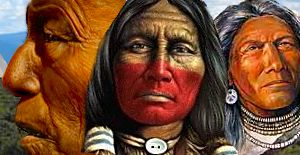| federated indians of graton rancheria timeline | |||||||
 |
 |
 |
 |
 |
 |
 |
 |
|
|
|||||||
| native american indian tribes of the US | |||||||
| |
||||||
federated indians of graton rancheria timeline |
Artifact Replicas|Jewelry|Clothing|Figurines|On Sale|New Productsfederated indians of graton rancheria timeline1579 - 1809 - The Spanish and Russian voyagers provide additional information about encounters with the Coast Miwok and their occupancy of the area. A Russian outpost at Bodega Bay, Fort Ross, is established in 1809. 1769-1823 - The Mission Period. The Spanish missions and the Mexican occupancy impacted this area of California. Mission San Francisco de Asisi (Mission Dolores), Mission San Rafael Archangel and Mission San Francisco Solano used Indians including the Coast Miwok and Southern Pomo people as their labor source. Records from these missions are still used to substantiate the Native culture and genealocial research. Even after the missison period, Indian people continued in servitude to the Mexican land grant owners throughout their confiscated land in their tribal territory. 1823 - 1880 - After the mission period ended in the 1830s, the Indians of San Rafael were granted 80,000 acres (20 leagues) in Nicasio (north and west of San Rafael). About 500 Indians located there. By 1850 the 36 Indian people remaining were persuaded to leave when Marin country stopped giving funds to any Indian not living at the poor farm. 1861 – The United States Congress enacts legislation which effectively extinguishes Indian title to almost all land in California, leaving most tribes, including Graton Rancheria’s ancestors, entirely landless. Mid 1880’s – By this time, as a result of the loss of homelands, European disease, mistreatment, and enslavement, the Indian population in California, which at European contact was estimated at 10,000 – 15,000 had declined dramatically. 1920 – Bureau of Indian Affairs purchases a 15.45 acre tract of land in Graton, CA for the “village home” of the Marshall, Bodega, Tomales and Sebastopol Indians. Through the purchase of this land, which was put into federal trust, the federal government consolidated these neighboring traditionally interactive groups into one recognized entity, Graton Rancheria. 1924 – Congress granted all Native Americans born in the United States full citizenship. 1958 – Congress passed the California Rancheria Act of 1958 calling for the termination of 41 California Rancherias, including the Graton Rancheria. Under the Act, land was distributed to three distributees (now deceased). 1960 – Early 1990s – Despite the federal government’s termination of the recognition of the Graton Tribe, Tribal members continued to protect the cultural identity of their people by preserving tribal and other archeologically important sites throughout their aboriginal territory 1990 – 1992 – In a continuing effort to protect their aboriginal territory and their cultural and political identity, tribal members, led by Chairman, Greg Sarris, raised money to travel to Washington to fight for restoration of their federal status. The tribe at this time (152) was established and organizing as the Federated Coast Miwok, later renamed the Federated Indians of Graton Rancheria. 1997- A Congressionally mandated study recommended the immediate restoration of three California tribes, including the Federated Indians of Graton Rancheria. 2000 – On December 27, 2000 President Clinton signed into law legislation restoring federal recognition to the Federated Indians of Graton Rancheria. The legislation also provided for the restoration of land to this now landless tribe. Since land was transferred to three distributees, now deceased, the only land belonging to the tribe is one acre which is held in private ownership by one Coast Miwok family. 2002 – The Bureau of Indian Affairs ratifies the tribe’s base roll and tribal constitution. The tribe then begins to establish a land base for its people. 
Native American Cultures - Pacific Northwest Poster Buy at AllPosters.com Framed Mounted |

Site Designed by: Mazaska Web Design Hosted by: HostIt4You.com © 1999-2008 AAANativeArts.com file:federated indians of graton rancheria timeline |
|||||||||||||||||||||||||||||||||||||||||||||||||||||||||||||||||||||||